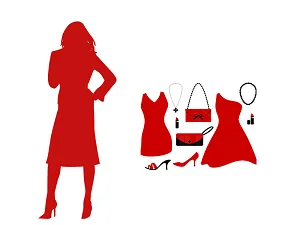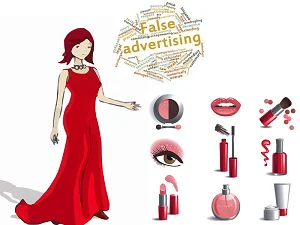Navigating the Menace of Misleading Advertisements in the Modeling Industry

Modeling scams often begin with bogus promotions. Modeling scam artists use two major types of deceptive advertising to lure consumers into their scams: false and misleading advertising.
False advertising is straightforward lying, with claims that are obviously untrue, such as false statements about a company's history during its development.
False advertising by modeling agencies also encompasses untrue assertions about whom a modeling company discovered and whose modeling career supposed began through the company.
Misleading advertisements often lack transparency about the modeling process, the qualifications required, and the realistic chances of success. Legitimate agencies are typically transparent about the industry, the services they provide, and the potential challenges individuals may face.
Some scams use bait-and-switch techniques, where the advertised opportunity is drastically different from what is actually provided. For example, an ad might promise a modeling contract but lead to a situation where the individual is pressured to pay upfront fees for questionable services.
False and misleading advertising is a significant issue within the modeling industry, where unscrupulous individuals or entities take advantage of aspiring models' dreams by promoting deceptive opportunities. These scams often involve misleading advertisements that promise lucrative modeling careers but deliver little or no actual value.
To protect themselves from false and misleading advertisements in modeling scams, aspiring models should approach opportunities with a critical eye, conduct thorough research, and seek advice from experienced professionals in the industry. Legitimate modeling agencies are transparent about their processes, fees, and the realistic expectations for aspiring models, and they do not rely on deceptive tactics to attract clients.
Similarly, false advertising includes bogus name-dropping with reference to supermodels, celebrities, prominent modeling agencies, national brands, and popular movies that have nothing to do with the firm.
The same firm that claimed to have discovered a supermodel also asserted that a host of other supermodels used their website to get work.
Misleading advertising can be described as advertising that is not entirely false but is sly. The consequence of the advertising, and the assimilation of it, no matter how much truth it contains, is essentially the same as deceptive advertising: misleading.
The Federal Trade Commission Act restricts individuals or agencies from making false or misleading advertising claims. Section 5 of the FTC Act empowers the FTC to protect consumers by taking legal actions against such agencies.
To exploit a sense of urgency, scammers use pressure tactics in their advertisements. They might create a false sense of limited availability or exclusive opportunities to persuade aspiring models to make hasty decisions without proper consideration.
Scammers often claim to have connections with reputable industry professionals, agencies , or brands to enhance their credibility. They may drop names or use logos without any actual affiliation, creating a false sense of legitimacy to lure individuals into their schemes.
The FTC website declares: 'In interpreting Section 5 of the Act, the Commission has determined that a representation, omission, or practice is deceptive if it is likely to mislead consumers and affect consumers' behavior or decisions about the product or service.
Here are some points about navigating the menace of misleading advertisements in the modeling industry:
Critical Evaluation of Promises:
Be Wary of Upfront Fees:
Verify Industry Connections:
Question Unrealistic Expectations:
Thorough Research on Agencies:
Avoid High-Pressure Tactics:
Be cautious of entities using high-pressure tactics to rush you into making quick decisions, especially regarding contracts or payments. Legitimate opportunities allow models the time to make informed choices.
Understand Industry Standards:
Seek Advice from Professionals:
Stay Informed About Common Scams:
Report Suspicious Activities:
Carefully scrutinize advertisements that make extravagant promises of instant success, high earnings, or guaranteed opportunities. Genuine success in modeling usually involves hard work and perseverance.
Legitimate modeling agencies typically earn commissions from the model's work rather than charging hefty upfront fees. Be cautious of advertisements that demand significant payments before providing services.
Misleading ads may boast about exclusive industry connections. Verify the legitimacy of such claims by researching the agency or individual, checking reviews, and seeking advice from established professionals in the industry.
Unrealistic expectations presented in advertisements, such as rapid fame or guaranteed success should raise red flags. The modeling industry is competitive, and success often requires time and effort.
Before committing to any agency or opportunity, conduct thorough research. Look for online reviews, testimonials, and any history of fraudulent activities associated with the agency.
Familiarize yourself with industry standards and norms. Legitimate modeling agencies adhere to ethical practices, and deviations from these standards may indicate potential scams.
Seek advice from experienced professionals within the modeling industry. They can provide valuable insights, help verify the legitimacy of opportunities, and offer guidance on navigating potential pitfalls.
Educate yourself about common scams prevalent in the modeling industry. Awareness of common tactics used by fraudsters enhances your ability to spot and avoid misleading advertisements.
If you come across misleading advertisements or suspect fraudulent activities, report them to relevant authorities, consumer protection agencies, or industry watchdogs. Your action can contribute to preventing others from falling victim to scams.
By adopting a critical mindset, conducting thorough research, and staying informed, aspiring models can navigate the menace of misleading advertisements and protect themselves from potential exploitation within the modeling industry.




